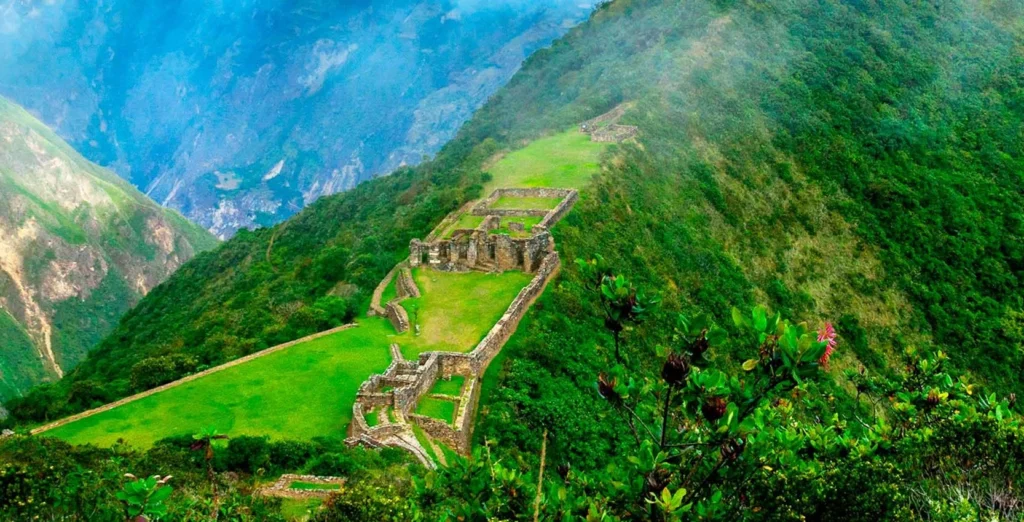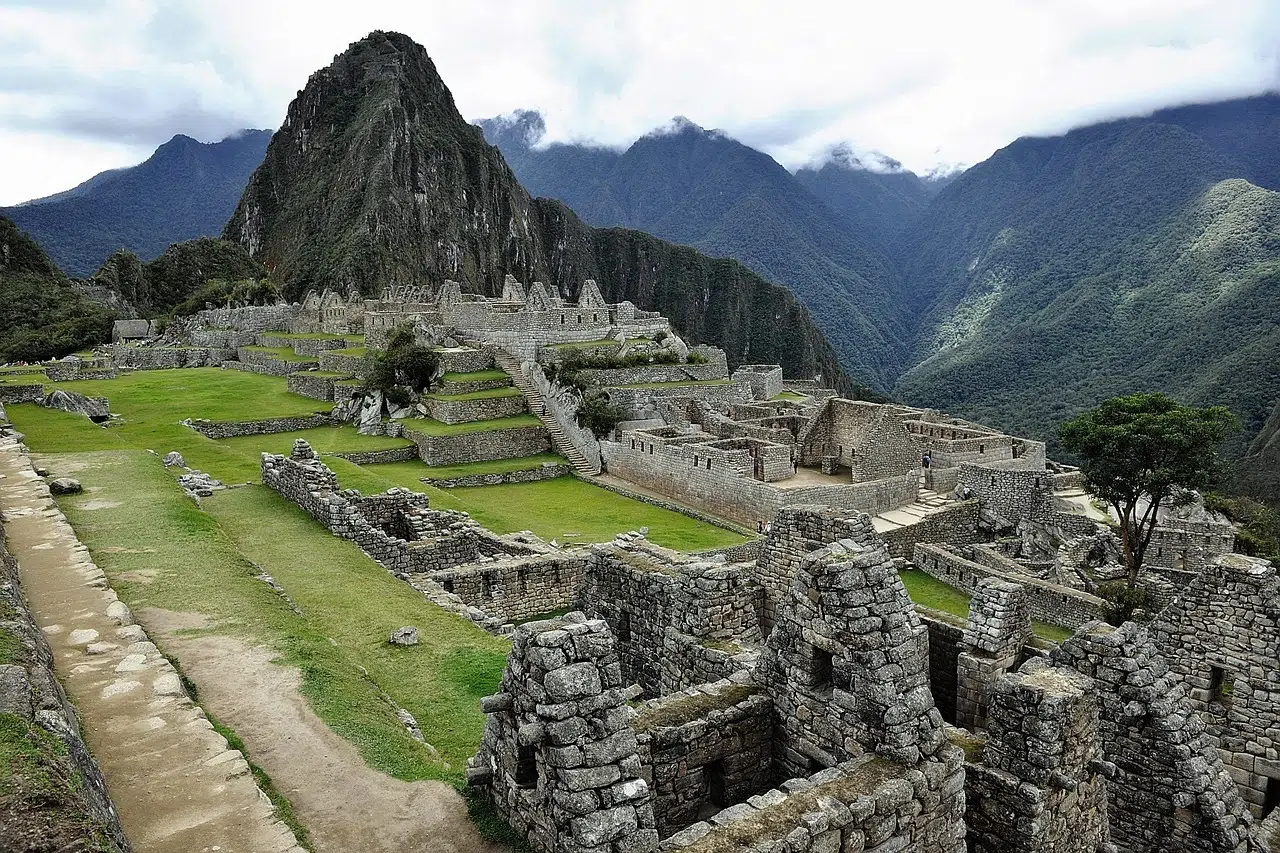The Choquequirao Trek is often described as one of Peru’s most spectacular yet lesser-known adventures. Often dubbed the sister of Machu Picchu, Choquequirao offers a remote, challenging trek through the Andes to the ancient Incan ruins. Unlike the heavily visited Inca Trail, the Choquequirao hike is a journey into solitude and untouched wilderness, with fewer tourists but equally rewarding views and cultural significance. For trekkers looking for something off the beaten path, this is the ultimate expedition.
Table of Contents
What is the Choquequirao Trek?
The Choquequirao Trek is a multi-day hike that leads to the impressive Choquequirao ruins, perched high above the Apurímac River. This trek is a lesser-known alternative to the Inca Trail and offers a more secluded experience for those willing to take on its challenges.
- Choquequirao ruins trek: Choquequirao was an important Incan site, similar in design and significance to Machu Picchu. However, it remains far less explored, giving it an aura of mystery.
- Choquequirao vs Machu Picchu: While Machu Picchu is grand and easily accessible, Choquequirao is more remote, offering an authentic and rugged adventure through the Andes. It is considered to be larger than Machu Picchu, though much of it remains unexcavated.
Choquequirao Trek Itinerary
The classic Choquequirao Trek itinerary is a 4-day journey, but longer options are available for those wanting to combine it with other treks, such as continuing to Machu Picchu.
Day 1: Cachora to Chiquisca
Begin your trek from the town of Cachora and descend to the camp at Chiquisca, passing through breathtaking landscapes.
Day 2: Chiquisca to Marampata, then Choquequirao
A challenging ascent takes you to the settlement of Marampata, from where you’ll get your first glimpse of Choquequirao. Afterward, hike to the ruins themselves for your first exploration.
Day 3: Explore Choquequirao
Spend a full day exploring the vast Choquequirao ruins, with their incredible terracing, ceremonial areas, and panoramic views.
Day 4: Return to Cachora
The trek back involves descending back to the Apurímac River and returning to Cachora.
Extended Trek Options: Some trekkers opt for a longer 5- or 6-day itinerary that continues through the Andes, eventually leading to Machu Picchu.
How Difficult is the Choquequirao Trek?
The Choquequirao Trek difficulty is often rated as challenging due to steep ascents, descents, and high altitudes, reaching up to 3,050 meters (Choquequirao’s altitude). It’s considered more physically demanding than the Inca Trail because of the rugged terrain and significant elevation changes.
- Choquequirao vs Inca Trail: The Inca Trail may be shorter, but the Choquequirao Trek involves steeper climbs and more solitude. Trekkers should be prepared for long days of hiking (5-8 hours per day).
- Preparation tips: To conquer this trek, it’s recommended to be in good physical condition and to acclimatize to the altitude by spending a few days in Cusco or another high-altitude city before starting the hike.
Best Time to Do the Choquequirao Trek
The best time to visit Choquequirao is during the dry season, from May to September, when you can expect clear skies and comfortable trekking conditions.
- Dry Season: Ideal for hiking, with fewer chances of rain, clear views of the mountains, and more manageable trail conditions.
- Rainy Season (October to April): While still possible, the trek becomes more difficult with muddy trails and the risk of landslides. However, the landscape is greener, and you’ll encounter even fewer people.
What to Pack for the Choquequirao Trek
Packing for the Choquequirao Trek requires preparation for both warm, sunny days and cold nights at higher altitudes. Here’s a basic Choquequirao packing list:
- Clothing: Moisture-wicking layers, warm clothes for the evenings, a rain jacket, and sturdy hiking boots.
- Camping Gear: If trekking independently, bring a tent, sleeping bag, and cooking equipment.
- Essentials: Sun protection (hat, sunglasses, sunscreen), insect repellent, trekking poles, a water purification system, and snacks for the hike.
- Altitude considerations: Bring altitude sickness medication or coca leaves to help with the adjustment.
Choquequirao vs Machu Picchu: Which One Should You Visit?
Both Choquequirao and Machu Picchu are remarkable Incan sites, but they offer vastly different experiences:
- Machu Picchu: Easily accessible, grand, and with modern tourist infrastructure, but crowded year-round.
- Choquequirao: More remote and physically demanding to reach, but offers an intimate connection with Incan history and fewer visitors.
For travelers seeking an immersive adventure, Choquequirao is the better option, while Machu Picchu is ideal for those wanting a more accessible, less physically demanding experience.
Guided vs Independent Trek: What’s the Best Choice?
- Guided Tour: Going on a Choquequirao guided tour ensures your safety and simplifies logistics such as food, gear, and permits. Guides also offer insights into the history and significance of the ruins.
- Independent Trek: It is possible to hike Choquequirao without a guide, but you must be well-prepared with proper camping gear, a good understanding of the route, and food for several days.
Cost Considerations: Guided tours typically range from $300 to $600 for the 4-day trek, depending on the services included (porters, food, etc.).
Wildlife and Nature on the Choquequirao Trek
The Choquequirao Trek takes you through diverse ecosystems, from the Andean highlands to lush cloud forests. Along the way, trekkers can encounter:
- Flora: Orchids, bromeliads, and other tropical plants.
- Fauna: You may spot condors, spectacled bears, and other native wildlife.
Be sure to have your camera ready for breathtaking views of snow-capped peaks, deep valleys, and the rushing Apurímac River.
Choquequirao Ruins: A Hidden Gem
The Choquequirao archaeological site is one of the most significant Incan ruins still being excavated. Unlike Machu Picchu, it remains off the beaten path, with much of the site yet to be fully uncovered. Visitors will find:
- Terraces: Sprawling agricultural terraces that cascade down the mountainside.
- Structures: Temples, ceremonial areas, and buildings that echo Incan ingenuity.
- Excavations: Ongoing archaeological work means you might witness active digs and restoration efforts.
Frequently Asked Questions (FAQs)
How long is the Choquequirao Trek?
It typically takes 4 days, though longer options are available.
How difficult is the Choquequirao Trek?
The trek is considered challenging due to steep inclines and high altitudes.
Do I need a guide for the Choquequirao Trek?
It’s possible to trek independently, but a guide is recommended for safety and convenience.
What is the best time to visit Choquequirao?
May to September is ideal due to dry conditions.
What should I pack for the trek?
Essential gear includes warm clothing, camping equipment, and sun protection.
Is there an entrance fee for Choquequirao?
Yes, expect to pay around 70 soles (subject to change).
How do I get to Choquequirao?
The trek begins in Cachora, which can be reached by bus from Cusco.
How high is the risk of altitude sickness?
The risk is moderate; acclimatization is recommended.
Can I camp at Choquequirao?
Yes, there are camping areas at Marampata and near the ruins.
How does Choquequirao compare to Machu Picchu?
Choquequirao is more remote, less crowded, and offers a more challenging hike.
Conclusion
The Choquequirao Trek offers adventurers a chance to explore a hidden Incan citadel, away from the crowds of Machu Picchu. With stunning landscapes, rich history, and fewer tourists, it’s a must-do for those seeking a trek off the beaten path. Whether you go with a guide or independently, this trek promises an unforgettable journey into the heart of Incan history and Peruvian wilderness.



